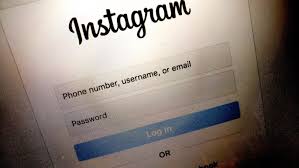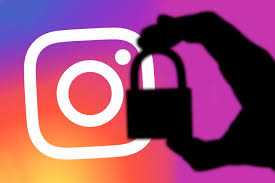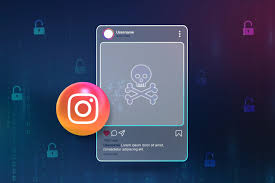In the digital age, Instagram has become more than just a photo-sharing app. It’s a social media powerhouse used by billions for connecting, marketing, brand building, and self-expression. With this immense usage comes an essential responsibility: account security. At the center of it all is your Instagram password — the gateway to your personal data, private messages, and online identity.
This article provides a comprehensive look into Instagram passwords — from understanding their importance to creating strong ones, and what to do if you forget or need to recover yours.

1. Why Instagram Passwords Matter
Your Instagram password is your first line of defense against unauthorized access. Whether you’re an influencer with a large following, a small business managing a brand, or an individual posting family pictures, your Instagram account holds sensitive and personal information. A strong, secure password prevents:
-
Account hacking
-
Identity theft
-
Unauthorized activity (e.g., spam posts or phishing)
-
Loss of followers or trust
-
Business disruption (for creators and brands)
2. How Instagram Passwords Work
When you create an Instagram account, you provide an email or phone number and choose a unique username and password. Your password is encrypted and stored securely by Instagram’s systems. Every time you log in, the app checks your input against its encrypted records to verify your identity.
Instagram never reveals your password — not even to you. If you forget it, you’ll need to reset it using recovery methods like email, phone, or Facebook (if linked).
3. How to Create a Strong Instagram Password
A weak password is like leaving your front door unlocked. Instagram recommends using a strong, unique password that’s hard to guess. Follow these tips:
✅ Use at least 12 characters
Longer passwords are harder to crack.
✅ Mix uppercase, lowercase, numbers, and symbols
Example: Gr@mm3rP@ss2025!
✅ Avoid common words or phrases
Don’t use “instagram123” or “password.”
✅ Don’t reuse passwords
Each platform should have its own password.
✅ Use a passphrase or random string
E.g., Sun@rise!Bike^Rider2025
4. How to Change Your Instagram Password
Changing your password regularly is good practice, especially if you suspect suspicious activity. Here’s how:
On the Instagram App:
-
Go to your profile.
-
Tap the menu (☰) in the top right.
-
Tap Settings and privacy > Accounts Center.
-
Choose Password and security > Change password.
-
Enter your current password, then the new one.
On Desktop:
-
Go to Instagram.com and log in.
-
Click on your profile icon > Settings.
-
Navigate to Change password.
-
Enter current and new password.
5. What If You Forgot Your Instagram Password?
Forgetting your password is common. Instagram makes it easy to reset:
Using the App:
-
On the login screen, tap Forgot password?
-
Enter your email, phone number, or username.
-
You’ll receive a login link or reset code.
-
Follow the instructions to reset your password.
Using Facebook:
If your Instagram is linked to Facebook, you can log in with Facebook and change your password afterward in settings.
6. Instagram Login Help and Recovery Options
If you’re locked out or can’t reset your password normally, Instagram offers account recovery:
Option 1: Request Login Help
-
Tap Get help logging in on the login screen.
-
Enter your account details.
-
Follow the instructions provided via email or SMS.
Option 2: Verify Your Identity
Instagram may ask you to:
-
Provide the email or phone number used to sign up.
-
Send a selfie or identification to verify it’s your account.
Option 3: Use Backup Codes (If 2FA Enabled)
If you’ve set up two-factor authentication, you can use backup codes you previously saved.
7. Two-Factor Authentication (2FA): An Extra Layer of Security
Instagram strongly recommends enabling 2FA, which adds a second step during login — usually a code sent to your phone or an authenticator app.
To Enable 2FA:
-
Go to Settings > Accounts Center > Password and security.
-
Select Two-factor authentication.
-
Choose your method: SMS or Authentication App (e.g., Google Authenticator).
Even if your password is stolen, hackers can’t access your account without the 2FA code.

8. How to Know if Your Instagram Account Is Compromised
Signs your password may have been compromised:
-
You’re logged out and can’t get back in.
-
Posts appear that you didn’t make.
-
Friends report spam from your account.
-
You receive login attempt notifications from unknown devices.
If you suspect hacking, change your password immediately, log out of other sessions, and review login activity.
9. Tools and Tips for Managing Passwords
Remembering unique passwords for every platform can be difficult. Consider using a password manager to store and generate secure credentials.
Recommended Password Managers:
-
LastPass
-
1Password
-
Bitwarden
-
Dashlane
These tools help you:
-
Store all passwords securely.
-
Generate complex, unique passwords.
-
Automatically fill login forms.
10. Common Instagram Password Myths
There’s a lot of misinformation around Instagram passwords. Let’s clear some up:
❌ “Instagram can tell me my password.”
No — passwords are encrypted and cannot be recovered, only reset.
❌ “Using your birthdate is safe.”
Weak and guessable — hackers often try personal details first.
❌ “I don’t need a strong password if I have 2FA.”
While 2FA helps, your password is still critical. Don’t skip security.
11. Instagram Password Scams: What to Avoid
Many websites and apps claim to “find” or “hack” Instagram passwords — these are scams and often phishing attempts. Here’s what to avoid:
🚫 Don’t use:
-
“Instagram password finder” tools.
-
Apps asking for your Instagram login.
-
Services offering account recovery for money.
These can lead to:
-
Your account being hacked.
-
Personal data theft.
-
Permanent loss of access.
Always go through official Instagram channels for password and account issues.
12. Business and Creator Account Security Tips
If you’re using Instagram professionally, your account security is even more important. Here are specific recommendations:
-
Assign multiple admins using Meta Business Suite (not shared logins).
-
Enable 2FA for all admins.
-
Use branded email addresses instead of personal ones.
-
Watch for impersonation or phishing emails.
Your online reputation and revenue may depend on your Instagram presence — guard it wisely.
CLICK HERE TO OPEN

13. Final Thoughts: Stay Vigilant
Your Instagram password is more than just a login credential — it’s a shield protecting your digital life. In today’s online world, securing it is not optional.
Key Takeaways:
-
Use strong, unique passwords.
-
Enable two-factor authentication.
-
Avoid third-party apps or hacks.
-
Stay informed about the latest security threats.
-
Act quickly if something feels wrong.
Cybersecurity isn’t just for IT experts — it’s for everyone who uses the internet. Protect your Instagram, and you protect your online identity.
Read more:https://a.meks.site/wp-admin/post.php?post=68&action=edit
